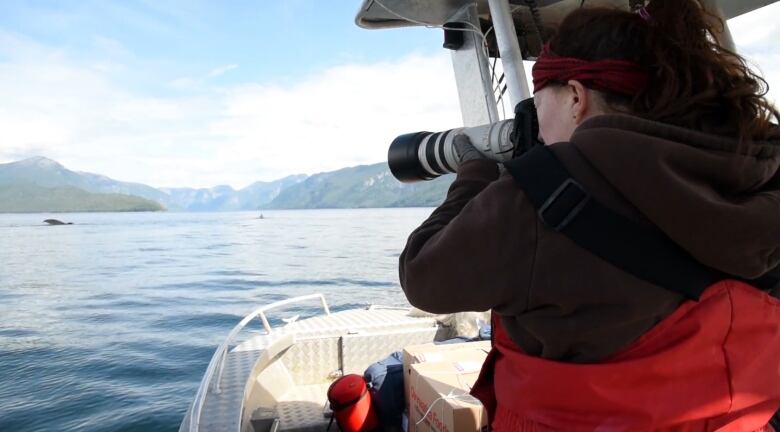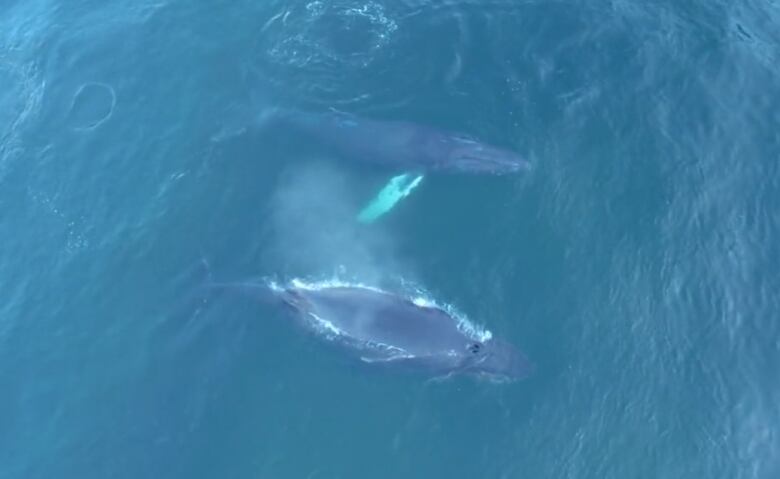Mysterious 'whale wave' observed in humpbacks on B.C. Coast
A decade of observation in a fjord near Hartley Bay uncovered a seasonal pattern among the whales

A decade of observation in a fjord on B.C.'s North Coast has uncovered an intriguing pattern among the thriving humpback whales that feed there each summer.
Researchers call it a "whale wave," in a peer-reviewed study published this week in the journal Marine Ecology Progress Series.
Each year, as hundreds of humpbacks arrive in the Kitimat fjord system, near Hartley Bay, B.C., they follow a seasonal pattern, as observed in visual surveys by the Gitga'at First Nation and North Coast Cetacean Society.
The whales start in outer watersand move into the inlet and Douglas Channel but it's not clear why.
"The peak of the wave moves progressively inland," said Chris Picard, science director for the Gitga'at First Nation and an author on the study.
While the study was underway, development was looming on this remote part of the coast, including the now-defunct Enbridge Northern Gateway pipeline, which would have brought increased tanker traffic to Douglas Channel.
Now, with LNG development still possible in the area, Picard hopes the decade of data will provide important information for decision makers.
"Understanding these details, we think, can lead to better conservation, and lead to better management of any activities that could potentially disrupt any part of that habitat."

Singing practice in the fjord?
Humpback whales make an annual migration, with most spending their summers primarily feeding in cool watersand winters breeding in warmer water further south.
After observing the "whale wave" near Hartley Bay, the researchers wondered whether that pattern was also about food, so in the last year of the study they measured prey abundance, water temperature and other variables, with a PhD student from the Scripps Institute of Oceanographyin California.
But still, the computer models yielded no clear explanation for the mysterious movements.
An interesting but untested observation: behaviour seemed to change up the inlet, with feeding less dominant than in outer waters, said Picard.

"They are still feeding certainly, but they're also engaged in a lot more social behaviour, a lot more calling, a lot more contact and interaction amongst the whales and, in some cases, even singing."
"Maybe the males are just practicing [mating calls] ... working on their songs like an opera singer warming up," he said.
Picard said the detailed observations challenge the notion that a large, migratory animal like the humpback could find somewhere else if their habitat was damaged.
"Habitats are not interchangeable," he said.
"So, if something happened to the habitat in Gitga'at territory I don't think these whales could just pack their bags and move."












_(720p).jpg)


 OFFICIAL HD MUSIC VIDEO.jpg)
.jpg)



























































































